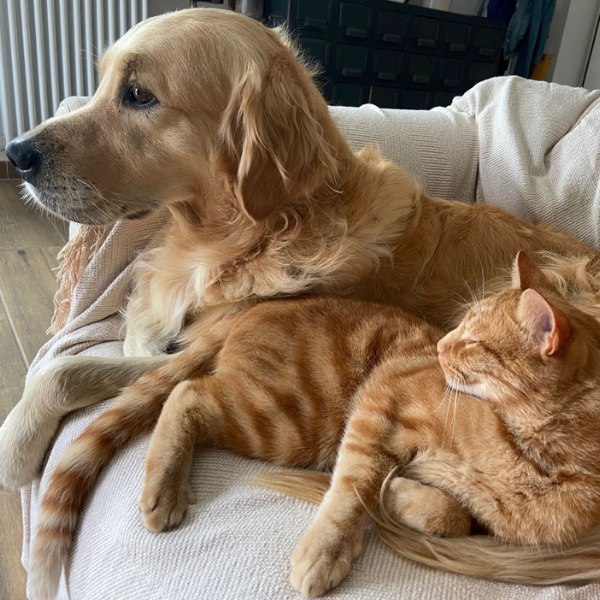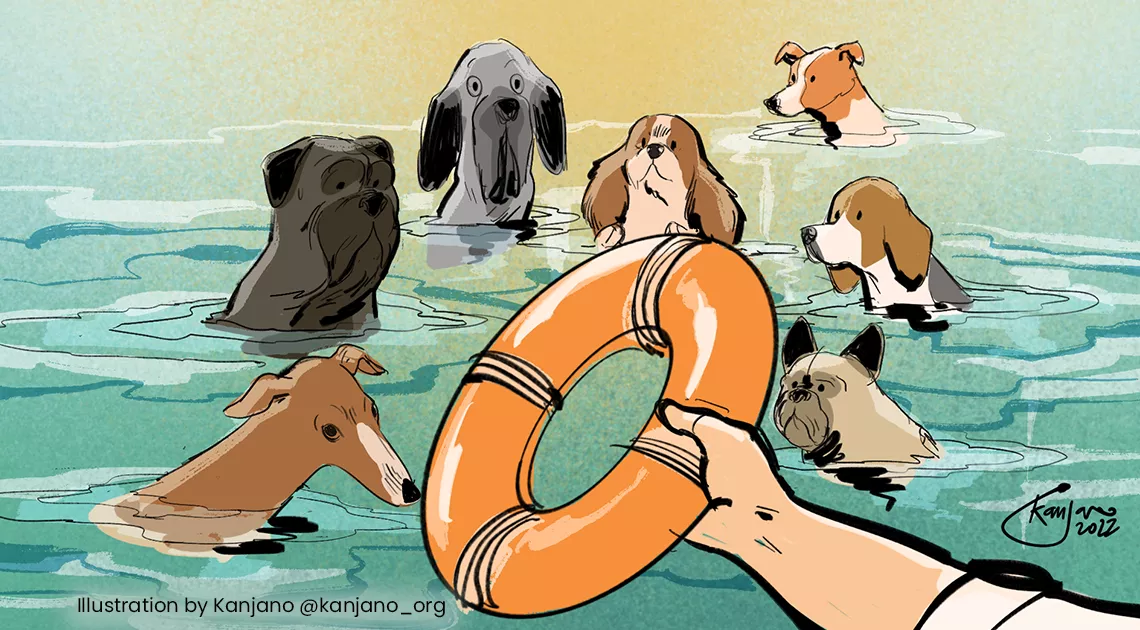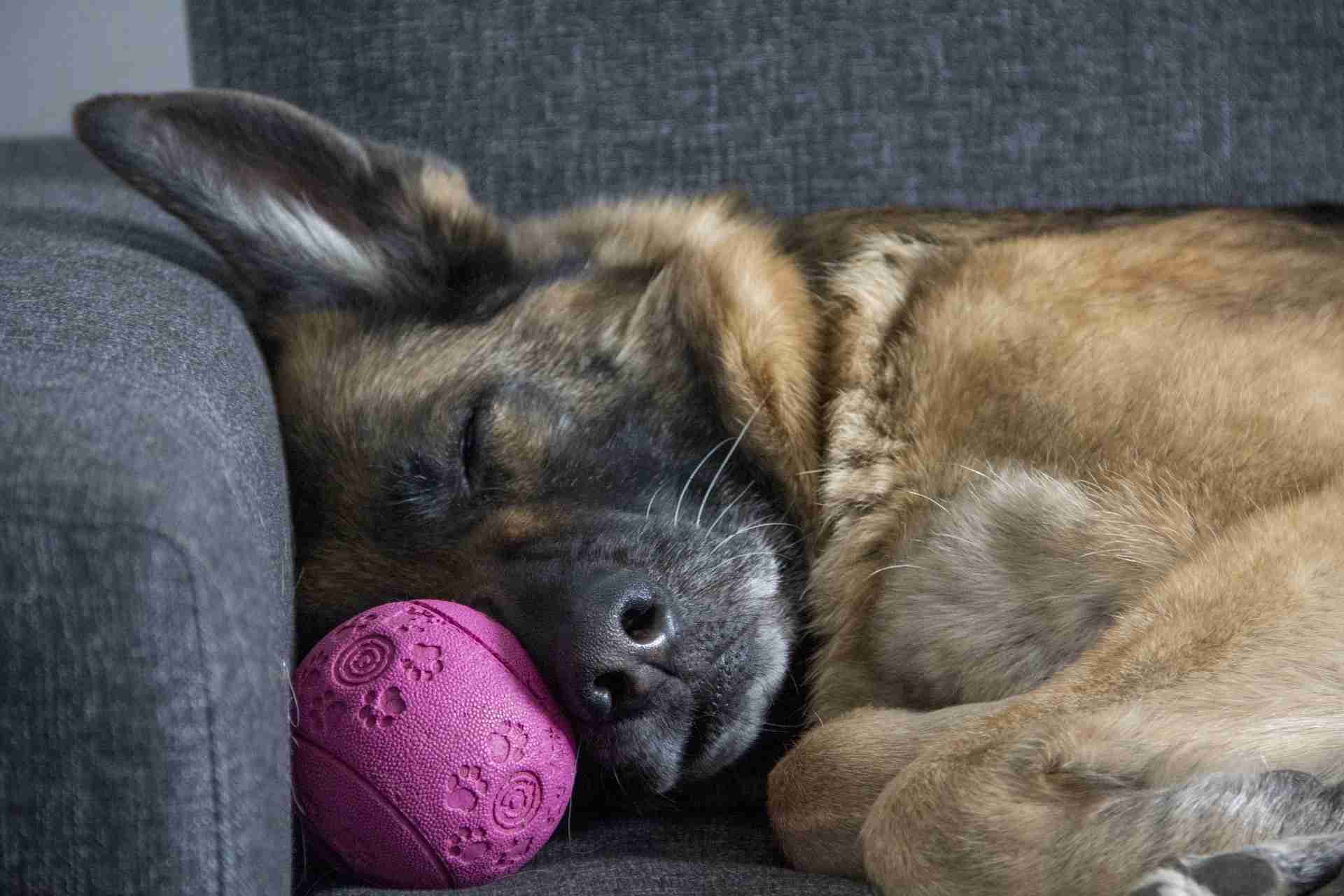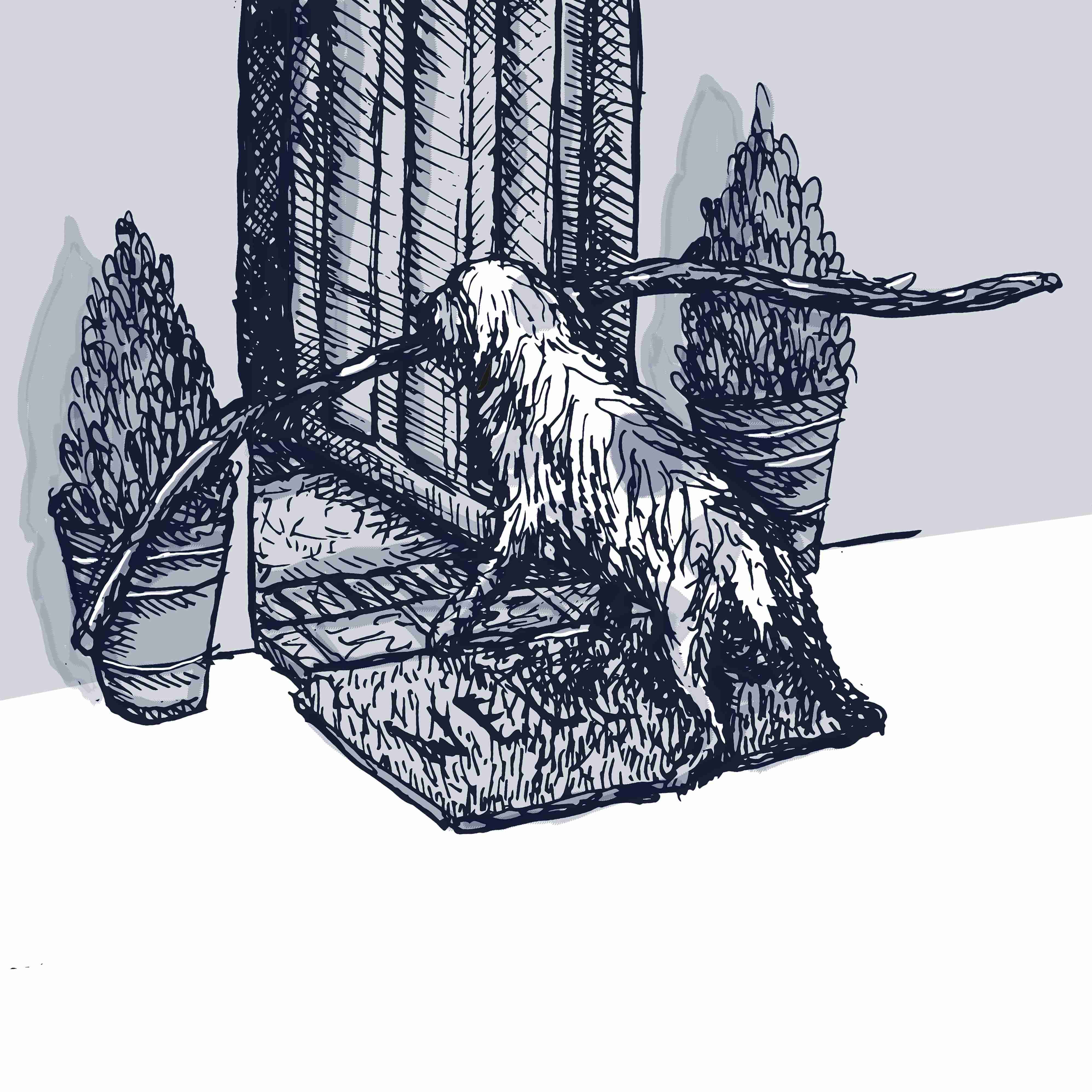Grass awns the enemy of summer
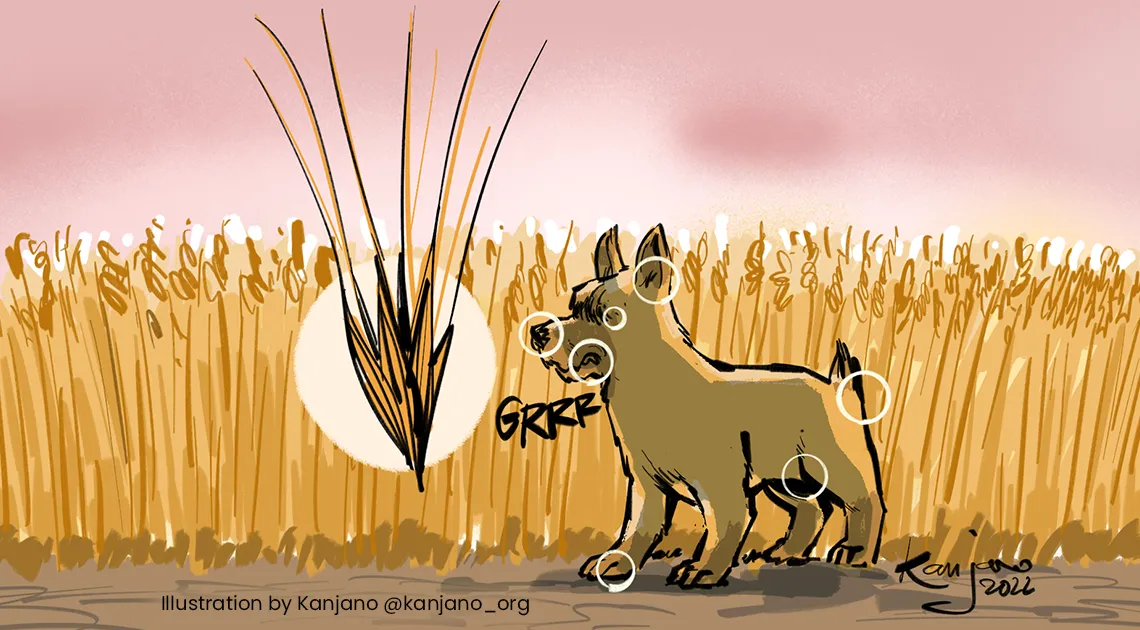
Practical advice from the clinic
Called differently in different regions and parts of the world the Bromus grass or grass awn is nothing but the ear of the grass.
Its shape resembles the tip of a spear, with a pointed end (with which it attaches to the mother plant) and a wider body from whose surface the more or less thin, rough, almost thorny vegetal filaments branch off, and that can remain entangled in animal fur and bird feathers. Their task in nature is to convey the seed away from the mother plant, which then can plant itself in the ground and sprout (of course mother nature also uses the wind to perform this task!); for the same reason, however, this particular structure makes grass awns very insidious and dangerous because once penetrated inside any animal's body or the tip of the awn has created a perforation in the skin, it will only enter deeper, rendering extraction almost impossible.
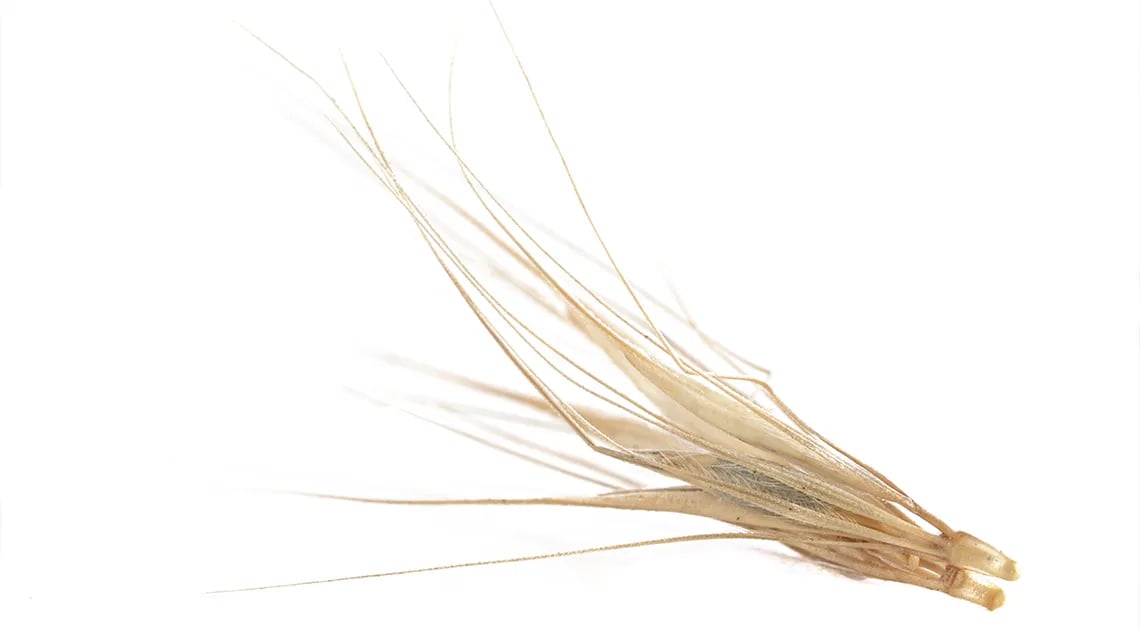
Grasses are very common both in the countryside and in many city areas (roadsides, public parks, flower beds and communal gardens) so when, towards the end of spring and early summer, the plant dries, the ears fall to the ground in large quantities becoming a danger for our four-legged friends. Be careful, however, because, even if it is typically a "summer emergency", do not underestimate that the dry grass ears will not remain around for a little longer: they can continue to create problems also in autumn, although less frequently, especially if there were no abundant rains that make the Bromus heavier and make it rot.
The symptomatology that accompanies a Bromus grass spikelet is relative to the localization of the same and the veterinarian will adapt his interventions to the contingent situation, in compliance with the ethics and safety for the patient, saving the unfortunate quadruped unnecessary suffering: sedation and anaesthesia, are very useful allies in this regard!
Over the many years of working in my profession I have extracted grass awns from everywhere: ears, nose, interdigital spaces and all parts of the skin surface, the anus and neighbouring areas, the foreskin, vulva and vagina, eyes, palates and gum mucus, and once I even had to remove a kidney because it turned into a single abscess cavity due to an infection transmitted by the plant foreign body that was in it.
Which areas are most frequently affected and what are the alarm bells for animal owners?
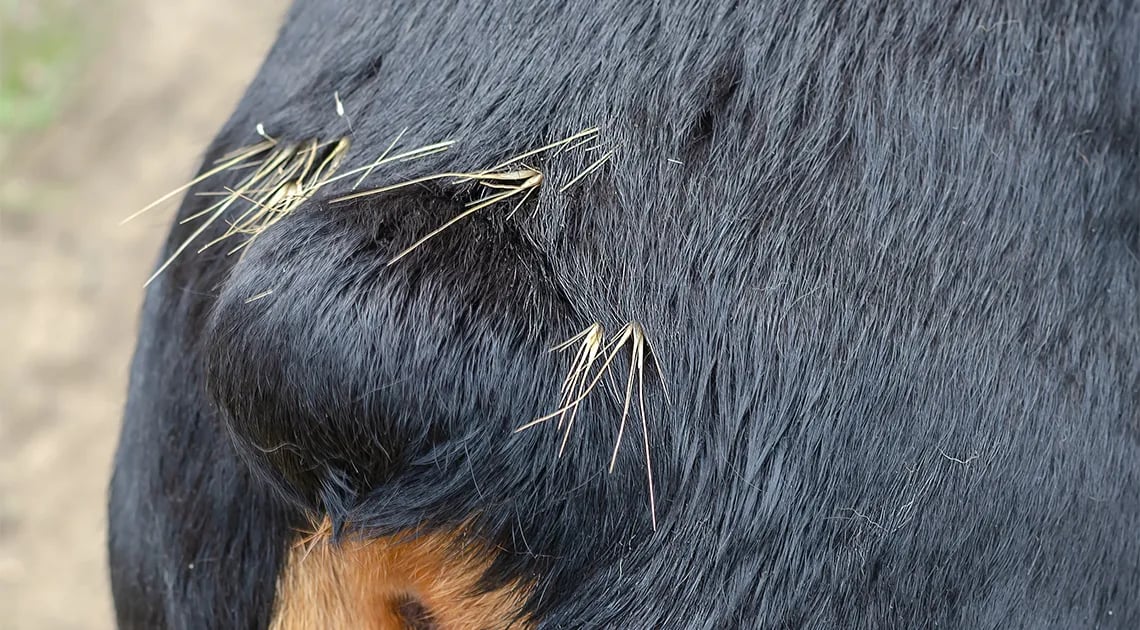
SKIN AND SUBCUTANEOUS MATTER:
If the grass awn reaches the skin but fails to pierce and enter it, we would see a very small area of redness at the point of entry because its tip will have caused an irritation and maybe also have stimulated the animal to lick the area, but not so insistently as when it penetrates the skin.
In this case, the discomfort/pain is constant, and the dog will try to ease it by licking (provided that the area is accessible to its mouth); unfortunately, the licking action, however, in the vast majority of cases, does not help to remove the foreign body but, on the contrary, it favours its migration further inside. Our dog's behaviour must push us to look carefully at the area where it is focusing its attention because this can allow us to identify the spikelet before it completely enters the skin or anyway to view the puncture and cause us to take our animal to the vet for extraction before infection sets in. If it has only partially entered, you can try to pull it out gently, grabbing it as close to the skin as possible and being careful not to break the filaments during the extraction because, if they remain inside, they could still cause infection and this would not solve the problem. In case of doubt, the advice is to have the vet supervise everything. If you do not notice right away, the affected area (for example, a leg) may become swollen, warm, sore, due to infection/inflammation, which is why your dog may be reluctant to let you touch it. You can often see one or more small holes from which a yellowish red liquid seeps out, and which represent the foreign body's point of entry or pus exit holes formed by the infection that pushes outwards (fistulas). In other cases, a localized, rounded swelling (abscess) may occur. This is because the grass awn is a foreign body that also carries bacteria, and therefore the body reacts by creating an inflammatory process that then, after the development of the infection, can become purulent and fistulate.
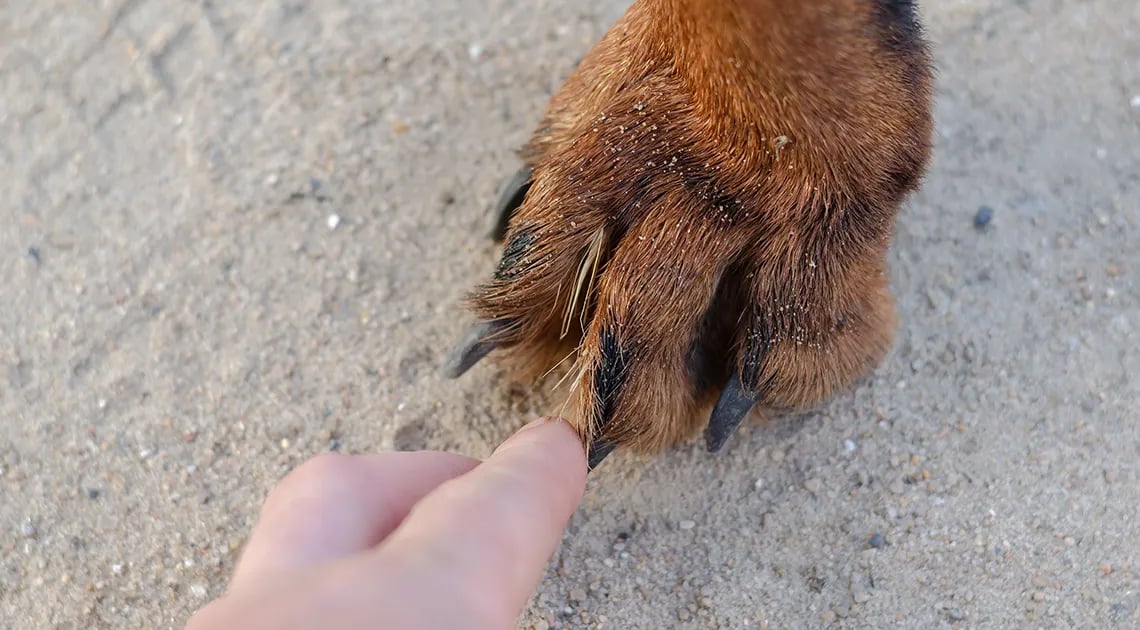
The most affected areas are legs and interdigital spaces, but the genital and perianal areas, the fold of the groin and armpits are at risk too, because grass awns are on the ground when the animal sits or lies down and if it does so on a "bed" of Bromus grass, there is little to be calm about!
Ultimately, however, the entire body surface can be affected for the reasons already explained.
The advice is to inspect your animal friend's body all over when you return from each walk (the golden rule for ticks too, which we have already talked about), especially in the most hidden areas such as interdigital spaces and especially in dogs with long or particularly uncultivated hair. It is very useful to always keep its coat well combed and cared for, removing knots or particularly thick and ruffled areas of hair that can be real strategic points for the rooting of Bromus grass spikelets.

EARS
It typically happens while your dog is quietly running around in the park, and it suddenly whines and starts shaking its head violently. If a grass awn is positioned in such a way as not to sting excessively, your dog may shake less visibly, but most likely it will have its head slightly tilted away from the side of the affected ear or will tend to scratch it with its leg (and may complain while doing so).
Ignoring these symptoms, and allowing days to go by "to see if it passes" is not the right thing to do. Even if it is not a real emergency, leaving a spikelet in your animal's ear canal for a long time means that a purulent external otitis can develop, that with continuous shaking, the foreign body can get stuck on the tympanic membrane (if it has not already done so) allowing for infection also in the middle ear, or that an aural haematoma may form (blood effusion due to rupture of the vessels from the trauma of continuous auricle thumping by the dog).
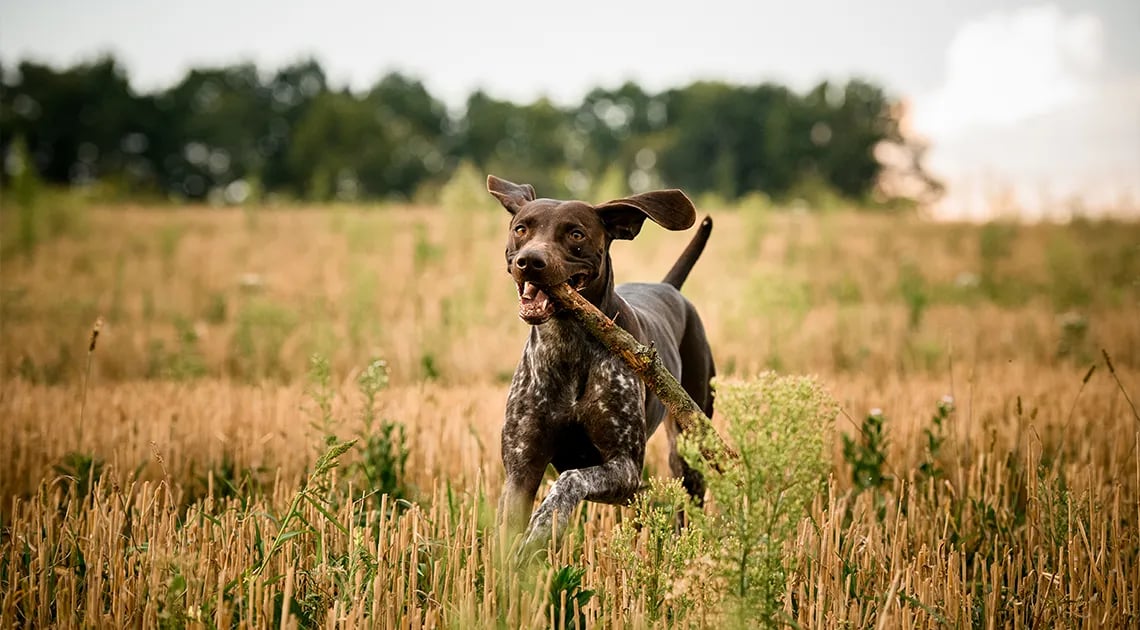
In some other cases, the spikelet can be embedded into the abundant earwax of an already unhealthy ear and can remain there without giving too many additional symptoms and maybe be "discovered" by the veterinarian in the middle of winter during a routine visit (these are what I call "fossil grass ears!!)
The advice is not to postpone a visit to the vet; to avoid exerting pressure at the base of the ear in an attempt to see if the dog complains or not (you risk pushing the grass head further inside and maybe let it injure the tympanic membrane); and above all do not think you can look into the ear hoping to see the offending awn because a dog's ear canal is not short and straight, but is L-shaped with the vertical part being rather long, that starts from the base of the auricle pinna and continues along the horizontal part which ends at the level of the tympanic membrane. Consider that even a veterinarian, despite being equipped with an otoscope, must pull the auricle pinna upwards in order to "vertically align" the ear canal to see the tympanic membrane.
For dogs with very drooping ears like the Cavalier King or Cocker, the hair of the outer part of the auricle pinna can be thinned out and the hair around the ear trimmed a little to limit the adhesion of any grass awns when the animal goes for a walk.
EYE
When the grass awn enters the eye, it usually locates itself below the third eyelid (whitish structure, like a kind of inner eye tendon going from the bottom up, which we see when our animals are sleepy or very relaxed). The dog (it can also be seen in cats) will have a lot of pain which it will manifest into affected winking (blepharospasm) or complete closure and abundant watery eyes. Rubbing the foreign body on a delicate structure such as the eye will create inflammation of the conjunctiva, cornea and often even cause corneal ulcers. This is a less frequent localization than on the skin, in the nasal or auricular passages, but it can occur when the animal rolls on the ground in play or to imprint its own odours or to scratch itself, pressing and then rubbing its head on the ground.
Here, even if you can see the grass awn, do not try to take it out because it is often well wedged under the third eyelid and you risk damaging the ocular structure which is very fragile. The animal will also suffer intense pain, which could cause it to make sudden movements and risk the grass awn to migrate into its eyeball.
.webp?width=1140&name=Blog-post_1140x630_05%20(1).webp)
NOSE
Also, in this case, entrance of a grass awn into the nose will cause your animal to react suddenly by sneezing violently and it can continue so much that it may beat its muzzle on the ground. Droplets of blood may also issue from the affected nostril.
Sometimes violent sneezing can expel the grass awn (in this case the animal will stop sneezing) and only a slight irritation of the nasal mucus will remain. In other cases, the grass awn may advance until it reaches the nasopharynx, be swallowed and then digested in the stomach.
However, if it remains in the nostril, the initial inflammatory rhinitis will turn into purulent rhinitis with the emission of a red-yellowish or greenish nasal discharge.
Also in this case, unfortunately, you should not try to look for and extract the grass ear, but you can carefully observe your pet to see which side of his nose curls up before sneezing or from which nostril blood droplets exit (you can put a cotton ball or tissue paper in one nostril at a time to see if red or pink traces remain), information that may be useful to the veterinarian.
Another thing you can do is to observe if, during sneezing, the grass awn is forced out. This is because if sneezing ceases at some point, it does not necessarily mean that the foreign body has been expelled, seeing that nasal mucus tends to "get used" to a foreign presence, which can mislead us, just as it can sometimes happen with the ear.
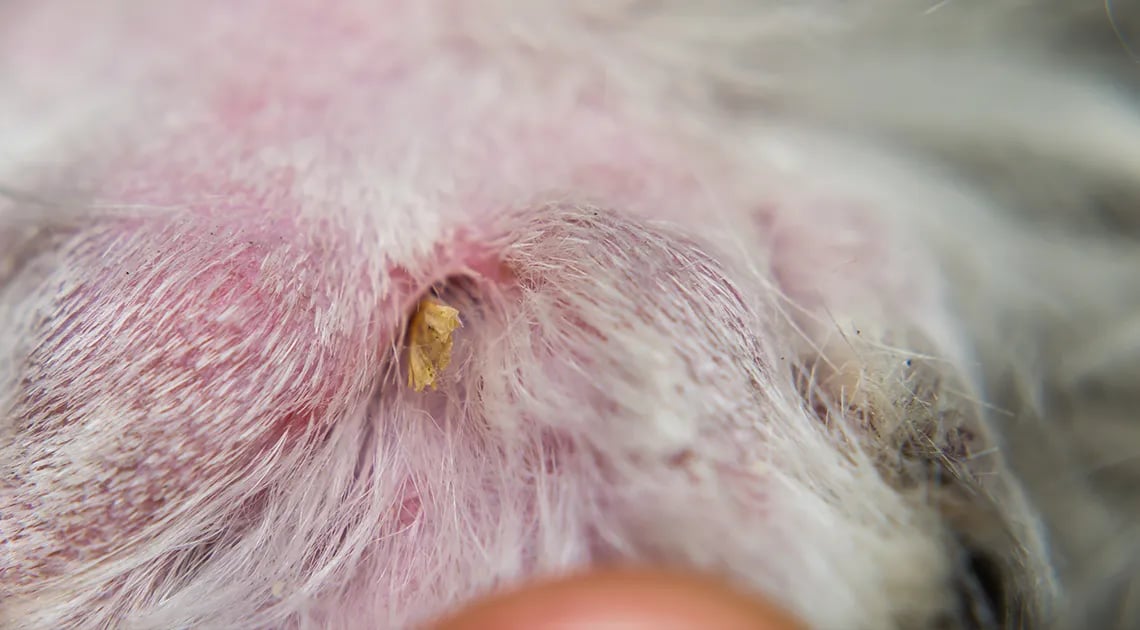
BRONCHI AND LUNGS
This can happen when an open-mouthed inhalation of a grass awn occurs while a dog is running in a meadow and it is the most fearsome spikelet entry because it goes directly into the trachea where it can get stuck, but more often it continues its path towards the bronchi and the lungs. The immediate symptom is a cough, but it is a symptom that tends to disappear quickly, sometimes in a few hours or even after a few hacks.
When the spikelet reaches a lung, a pneumothorax can be created (and in this case the dog will begin to breathe badly) or a purulent pneumonia can develop weeks later, usually initially localized to a lung lobe. If you are "lucky", the spikelet will cross the lung, go forward, puncture the diaphragm and continue to advance until it re-emerges on the skin surface of the costal area in the form of an abscess bowl, with or without fistula. In this case, it is often possible to identify the foreign body and it can be removed under ultrasound guidance. If it is suspected that the spikelet has reached the lung, a CT scan will be necessary for a diagnosis and to define its location, followed by surgery for extraction.
Here, the only thing you can do is exercise maximum attention when your dog is in the open air, so you can pick up any sign that reminds you of what I have described above.
Doc. Alessandra Di Marzio. Independent Veterinary Physician.
Other blog article from Doc. Di Marzio

